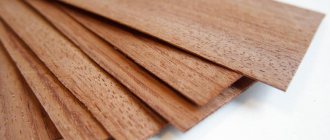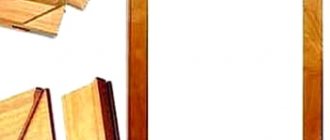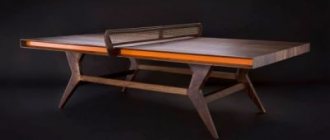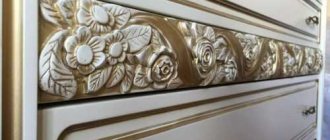Such an additional and interesting decorative element as a DIY screen made from scrap materials can fit perfectly into the interior. Thanks to screens of various designs, you can distribute the space at your discretion and hide your personal belongings from strangers.
As we have already mentioned, it is not at all necessary to immediately go to the store in order to purchase a finished product - making such an interior element is not considered difficult, and thanks to the variety of design ideas, you can independently create an exclusive screen that will fit perfectly into the room. Below we will look at various options for making partitions.
DIY screen from scrap materials
Pros and cons of using screens
Lightweight furnishings are attractive for their versatility: they look equally good in both spacious and small rooms. The products have many advantages and therefore are very popular at the moment.
The advantages of these decorative elements include:
- light weight and compactness, allowing you to move the item from one place to another;
- low price provided you make the screen yourself from scrap materials;
- the possibility of increasing the area of the structure due to additional elements in the form of pockets, shelves or hooks;
- many options for decorating a room thanks to the variety of screen designs;
- the ability to create a screen partition with your own hands in accordance with the size of the room.
Minor disadvantages include:
- lack of sound insulation;
- instability of the structure.
Since the product plays a decorative role in the room, the disadvantages can be considered insignificant.
Variety of species
If previously screens were simple and of the same type, modern models amaze with the variety of shapes, sizes, materials and design options. To decide to make a screen partition for a room with your own hands, you should get acquainted with the various design options.
You need to choose a suitable model based on the shape and size of the room, interior features and your preferences.
Let's sum it up
Even such a simple interior element as a screen will allow you to use your creative abilities. Don't be afraid to experiment - designers prefer to combine different materials and decorations when making partitions, so you can get an unusual, but at the same time functional product.
Lately, you can often see homemade interior items made from pallets when visiting someone. These are structures used to transport goods. It turns out that it is not so difficult to make a sofa from pallets (pallets) with your own hands, and in terms of its quality it can be even better than what you can buy in a store.
Casement model
A classic product consisting of a durable frame, the elements of which are connected to each other either using piano hinges or parts made of thick fabric or leather.
The most common are three-leaf structures, but four-leaf ones are also found. The number of elements depends on the area of the room. The height of the product reaches 180-200 cm.
Single screen model
This partition consists of one continuous leaf. For stability, it is either attached to the floor or fixed with one edge to the wall. This deprives the product of mobility.
Single-screen screens are often installed in offices to delimit workspaces, in kitchens to highlight a dining area, in studio apartments to designate the living, sleeping and kitchen areas of space.
Single-leaf partitions have also found their use in small cafes or restaurants to separate tables from each other.
Transparent model
A decorative element of the interior of any shape and size, having an openwork fabric that does not hide what is on the other side. Either translucent fabric or mesh is stretched over the frame. Products of this type are used only for decorating the room.
Note!
- Do-it-yourself installation of interior doors - preparation of the structure, selection of doors, installation step by step + instructions from professionals
- DIY shoe rack - types of designs, manufacturing materials, step-by-step master class with simple diagrams and drawings
Do-it-yourself sliding wardrobe - manufacturing manual with a full description of the stages, types of structures, choice of manufacturing materials (photo + video)
How to cut bamboo correctly
Make the groove for the bamboo stems not continuous. To enter the jigsaw, pre-drill a small hole. | The jigsaw will cut better if you set it to a small stroke amplitude and low cutting speed. |
It is more convenient to make holes with a Forstner drill in impact drilling mode. The trunk will not delaminate in this way. | When cutting a bamboo trunk, slowly plunge the jigsaw blade into the trunk from the side at a low cutting speed. |
Making your own screen
An ideal option for independent creativity would be to make your own screens from wood and fabric. This classic model will look perfect in any interior. You can assemble it easily and quickly if you use the tips and recommendations on how to make a screen with your own hands.
The essence of the work is that you need to stretch a piece of textile onto a wooden frame. The product model can be any: book, folded or single-screen.
The main task is to decide in which room the structure will be located and choose the fabric of the desired color so that it fits harmoniously into the decor.
The process of creating a screen begins with preparing the essentials:
- bars in the amount of 12 pieces measuring 170x2 cm and 12 pieces measuring 60x2 cm;
- piece of fabric;
- paint and varnish products;
- glue;
- decorative elements;
- power tools;
- fasteners;
- sandpaper.
Next you need to act in accordance with the step-by-step instructions:
- Using a ruler and pencil, mark the bars to assemble the frame.
- In the designated places, make cuts up to half of the wooden parts.
- Using a chisel and hammer, make a depression in the cut area.
- Assemble the wooden parts into the frame, first smearing the joints with wood glue.
- After the glue has dried, sand the finished frame with sandpaper and varnish.
- To strengthen the structure, fix the joints of the frame with screws to the metal corners.
- After making the frame, you can prepare the textile part of the screen. The fabric cut must match the size of the frame with allowances for hems. If it is not possible to use a whole piece, you can create a patchwork composition.
- Using a furniture stapler, secure the fabric to the frame, starting from the top. To prevent the fabric from sagging in the future, it must be fixed with tension.
- The structural parts covered with fabric must be connected with furniture hinges, piano hinges or textile elements.
Piano hinges or fabric connections allow the product to be folded in any direction.
Japanese style
An interesting option is a Japanese-style product. To make it yourself, prepare:
- bars 2x5 cm;
- furniture hinges;
- fabric of any color, texture;
- thin cord (decorative) or rope;
- hammer, chisel;
- screwdriver or screwdriver;
- glue, clamps;
- brush, paint (varnish);
- furniture corner, screws;
- measuring tool;
- sandpaper.
To begin, mark the bars by setting a distance of 5 cm from the edge and drawing a line across. Further actions:
Flexible tube partition
Among modern models, bamboo structures are very popular, but they are quite expensive. You can make a screen from cardboard tubes from fabric rolls and style it as bamboo branches.
To assemble it, you should prepare the necessary material:
- From 15 to 30 cardboard blanks, depending on the desired length of the product;
- cutting tools;
- marking accessories;
- awl;
- decorative durable thread;
- acrylic paint in cans in a color that imitates wood or stems.
Next you should act in accordance with the recommendations:
- Prepare tubes of different lengths to give the product a natural look.
- Paint the workpieces.
- Use an awl to make holes at the upper and lower ends of the tubes.
- Thread a cord through the holes and connect the structural elements.
This decorative piece of furniture will resemble a picket fence made of reeds or bamboo. It will be lightweight and can be conveniently rolled up. It can be given any shape to fit into the interior of the room.
It should be remembered that products made of cardboard are afraid of moisture, and a structure made of tubes will not be as reliable as a self-made wooden screen.
With a little creative ingenuity and some effort, you can make an original piece of furniture yourself and give your home an exclusive look.
Design options
When the main work of creating the screen is completed, you can think about how to decorate it. Or rather, this should be thought through in advance, even at the preparation stage. After all, a new piece of furniture must be combined with the main style of the room.
If, for example, the room is decorated in oriental style , then fabric drapery, rhinestones, and beads would be appropriate. If this is a marine style, then you can safely add a little marine theme to the screen made of burlap or ropes - pebbles, shells, an anchor or a miniature steering wheel.
If there is an artist in the house, you can stretch the canvas over some parts of the screen or over one of the parts and paint a landscape. Little novice artists can paint pictures on cardboard.
For a screen made from branches, it would be appropriate to add leaves or flowers, as well as natural materials.
If you need to see what the finished screen will look like, you can look at ready-made examples.
- The screen, decorated with a mosaic of colored glass, looks unusually beautiful. It will decorate any room and fit into many styles.
- This is how festive and stylish the design made of twigs looks, to which garlands of lights are added.
- A screen simply covered with fabric also looks harmonious. The main thing is that it fits into the overall interior, as in this case.
- And this is what an option that you can create together with your children looks like. To do this, you need to cut out parts from cardboard and fasten them together.
A master class on making a screen using available materials is presented in the video.











